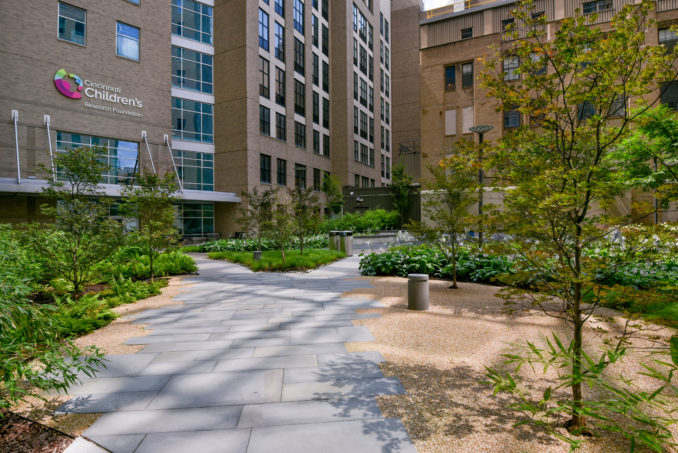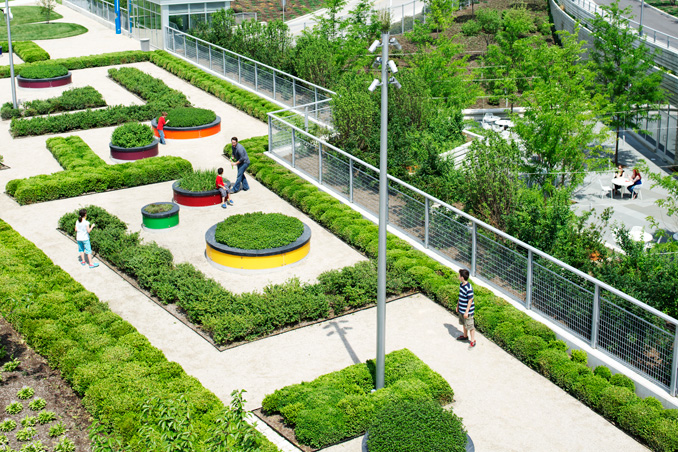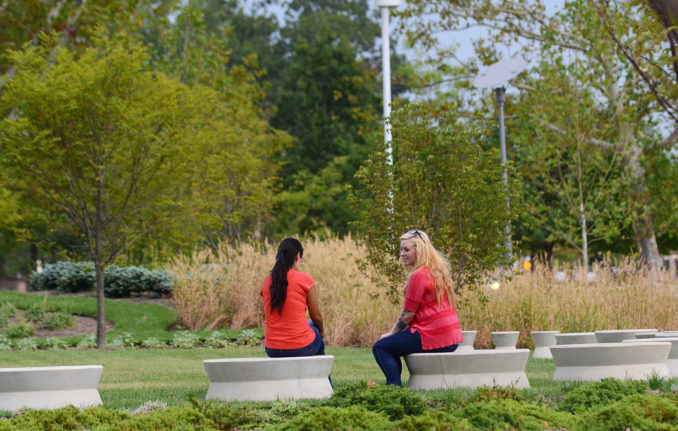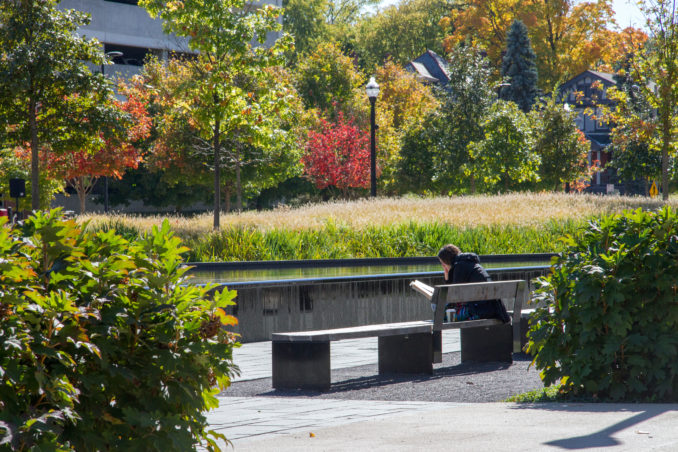Gardens throughout history have been used to aid in the healing process. Monastic or cloister gardens of the middle ages were used for growing medicinal plants and as a place of respite for patients. Japanese Zen Gardens whose simple, natural elements created a tranquil sanctuary for viewing. Modern medicine and advancement in technology however, diminished the importance of nature in the healing process for decades.

Groundbreaking research by Roger Ulrich (Published in 1984 in the journal Science), a professor and director of the Center for Health Systems and Design at Texas A & M University, brought the benefits of nature back into the healthcare conversation. Ulrich’s findings illustrated how surgical patients with views of nature had shorter post-operative stays, fewer negative comments from nurses, took less pain medication, and experienced fewer minor post-operative complications than those with an “urban view”.
This work, along with many others, has led to a movement of Evidence-Based Design (EBD), which emphasizes quantitative evidence to influence healthcare design. Application of evidence-based design tenants can improve the emotional and spiritual well-being of users as much as it can improve operational efficiency and the quality of clinical care, which translates to not only to wellness benefits for patients, family, visitors, and staff, but also bottom-line economic sense.
Healing gardens are rooted deeply in the principles of E.O. Wilson’s biophilic hypothesis from his work Biophilia (1984) that suggests humans possess an innate tendency to seek connections with nature and other forms of life. By understanding the connections between nature and the community, we can design spaces that help visitors, patients, and hospital associates connect with the healing and stress reducing aspects of nature, resulting in better patient outcomes, better staff retention, and less risk.

Cincinnati Children’s Hospital Medical Center Clinical Sciences Pavilion, Cincinnati, Ohio Credit: Randall Schieber
In 2012, Nationwide Children’s Hospital implemented biophilic design, transforming a 4-acre site into a Children’s Garden, which includes a fragrance maze, moonlight garden and tot lawn, the entry bosque, a running lawn, a storyteller’s garden, and an interactive play area. These elements focus on the most important aspect of healing gardens – the vegetation. Trees, shrubbery, and flowers serve a role beyond beautifying the landscape, as they engage the senses and explore the textures, scents, colors, and sounds of nature to enhance the patient experience. More simply, these natural elements offer guidance in times of turbulence and celebration in times of recovery.


In Birthright – People and Nature in the Modern World, Stephen Kellert acknowledges how closely linked human health and well-being are to nature, asserting that our increasing disconnection with the natural world affects our ability to think, feel, communicate and create. Gardens like Spirit of Women Park at the Wexner Medical Center help alleviate this disconnect, integrating quiet spaces where peaceful contemplation can take place; but the healing doesn’t just happen outside. Design concepts like the Wellness Campus are utilizing biophilic design to create building interiors with strong connections to nature through daylighting and integrated outdoor spaces that provide room for privacy, socialization and therapeutic activity.

Chlois G. Ingram Spirit of Women Park, The Ohio State University Wexner Medical Center, Columbus, Ohio | Credit: Sahar Coston Hardy

Nationwide Children’s Hospital | Credit: Nick Fancher
MKSK’s Healthcare Studio is committed to the benefits of healing environments that enhance the well-being of patient, family, physicians, administration, and staff, affecting positive health care outcomes. We are focused on creating built environments with therapeutic landscapes and healing gardens that address the physical, mental, emotional and spiritual needs of the healthcare campus population to positively affect patients, healthcare providers, staff, and visitors through connection to healing and stress reducing aspects of nature with beneficial distractions that aid the healing process.
As we explore new ways of improving healthcare through the use of healing gardens, biophilia and evidence-based design we are reconnecting to nature in a way that is uniquely human and deeply rooted, reminding us that we are not only connected to nature, but a part of it. The proven benefits of healing gardens as a tool for the larger healthcare system represents more than efficient treatment, allowing us to continue shaping the future of human connection and building places for people.
References:
Ulrich, Roger S. (2000). Evidence-Based Garden Design for Improving Health Outcomes. Investigating the Relationship between Health and the Landscape: Therapeutic Conference Report. University of Minnesota Landscape Arboretum.
Kellert, Stephen R. (2012). Birthright – People and Nature in the Modern World. Yale University Press.
